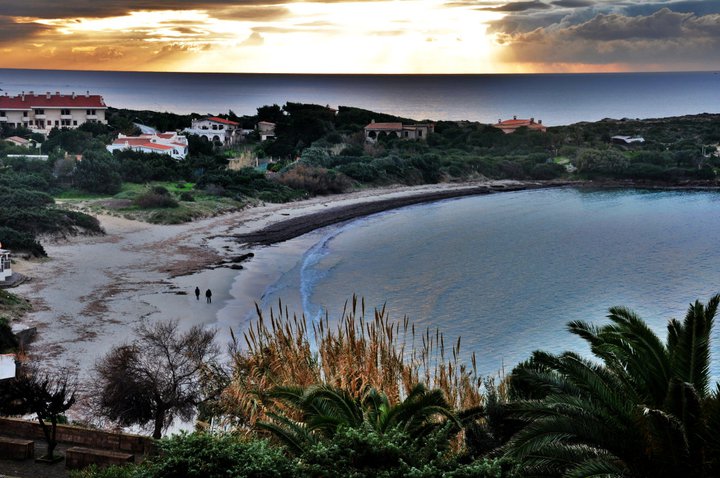Calasetta is not widely known, but there’s no question that those who have come will never forget its magnificent beaches.
Sottotorre is the cove right below the Torre Sabauda tower overlooking the town. It’s a gorgeous, white-beached cove with crystal-blue water that is very shallow, making it a popular destination for families with children. La Salina, just a kilometer out of town, has two white sandy dunes dotted with San Pancrazio lilies where two species of wind-bent juniper grow: juniperus phoenicea, or Phoenician juniper, and juniperus macrocarpa.
A bit further is Spiaggia Grande, a cove stretching to Punta della Tonnara, venerated by surfers as it is open to the mistral wind; part of it is reserved for tourists traveling with their canine friends.
Posidonia oceanica, or Neptune grass, has lived in the Mediterranean for many millennia, since between 80,000 and 200,000 years, they say. In fact, it was recently discovered to be the oldest organism in the Mediterranean, according to Francesca Mancuso in Green Me (who also took the picture).
The grass is a full-fledged water plant, not just alga. Native to the Mediterranean Sea, its name comes from the mythological Greek god of the seas, Poseidon (Neptune in Roman mythology). Neptune’s grass usually covers large areas, called “fields” that provide shelter and the habitat of many fish and other plants. Plus it oxygenates the sea and is an indicator of clean water. When it dries, it is pushed by currents and accumulates along the beaches. Sometimes it forms tall layers as soft as pillows. Italian law protects it and prohibits its removal, to the displeasure of many who don’t like it and want it gone.
But those of us who have always known it, and appreciate it for how its softness and how it makes the sea fragrant, would rather see gone the plastic and garbage of all sorts left by beach-goers on the beaches. We’d let Neptune grass stay; after all, this is its home.
“Neptune grass on the beach is evidence of a clean sea. This is its place. We’re the guests here; let’s respect it.” .
And, depending on the currents, sea temperature, storm surges and other factors, beaches in the center of the Mediterranean, particularly a wind-exposed island like Sant’Antioco, often change shape, becoming longer or shorter, and then back again.
One of the lucky things about living here is watching the beaches change in summer and winter, at dawn and dusk, with the wind or calm airs, when they are deserted or teeming…
In the photo a winter view of Spiaggia Sottotorre in Calasetta by Roberto Romans Zucca.
Gallery’s photo are by Paola Parigi, Roberto Romans Zucca and Enzo Zucca.





